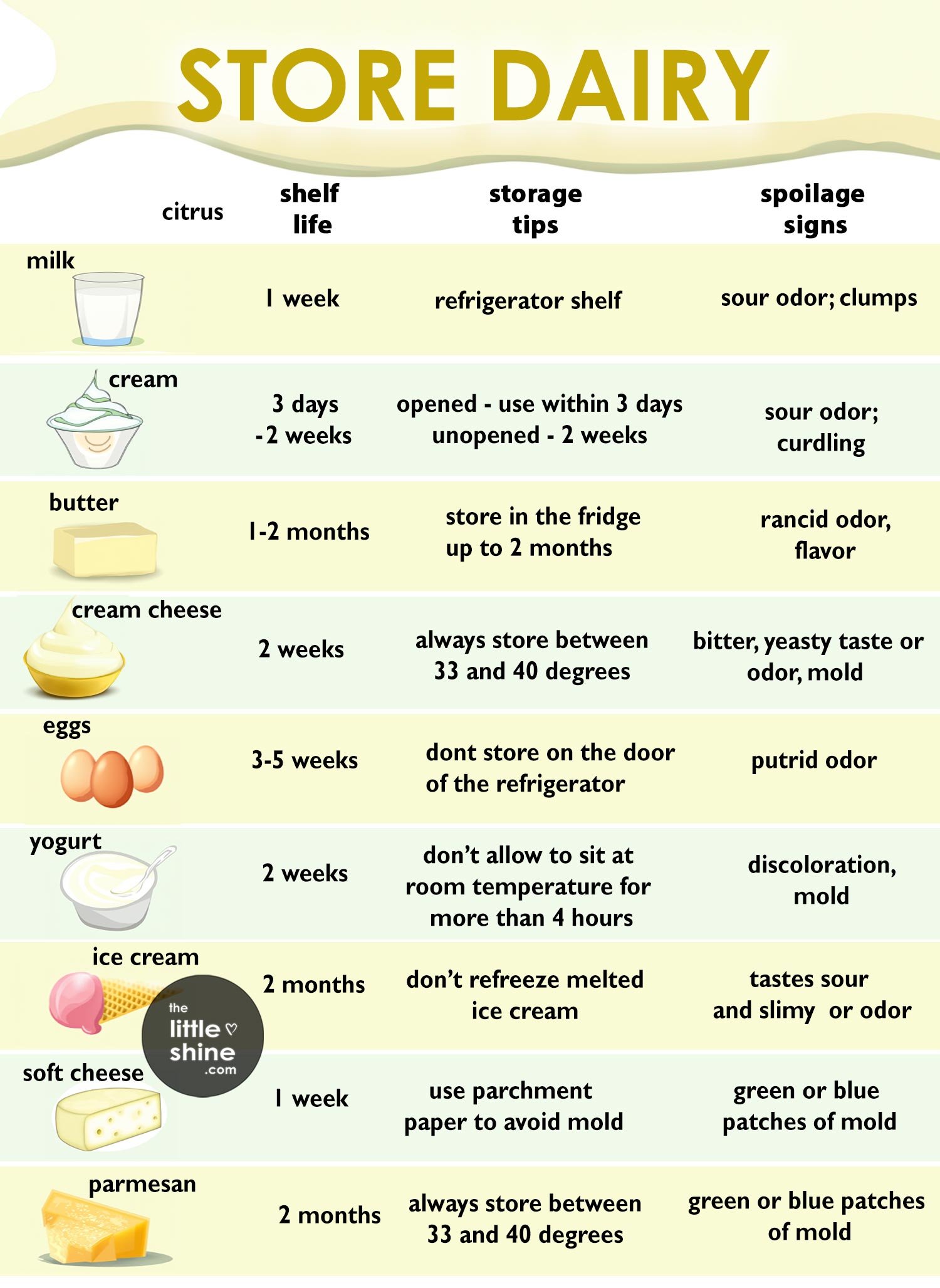When it comes to storing dairy products, be it milk, cream, butter, yogurt, cream cheese, eggs and the list goes on., well, it needs to be stored the right way for it to remain fresh and edible.

Incorrect storage of dairy products can cause them to get spoilt earlier than their shelf-life indicates and this could cause food poisoning if consumed in such a condition.
So, in this article I will discuss the shelf-life of different dairy products, what the signs of spoilage are if they aren’t stored the right way and what are some of the best storage tips as well.
10 Types of Dairy Products and How to Store them the Right Way
1. Milk
Milk has a shelf-life of around 1 week. It shouldn’t be stored on the door of the refrigerator, but keep it on a refrigerator shelf. Milk should ideally be stored between 33 to around 40 degrees. When milk goes bad, the signs of spoilage could be a sour odor, clump formation etc.
2. Cream
Cream has a shelf-life of 3 days to 2 weeks. This means an opened can of cream will last around 3 days and must be used within 3 days of it being opened, while an unopened can of cream will last up to 2 weeks, both, if stored between 33 to 40 degrees. If cream is spoilt, you will find it curdled with a sour odour.
3. Ice Cream
Ice cream has a long shelf-life of about 2 months, but it should always be stored in the freezer. Avoid keeping ice cream outside for more than 10 minutes, as melted ice cream tends to spoil sooner. After around 2 months, ice cream can start developing freezer burn.
4. Parmesan Cheese
Parmesan cheese lasts for about 2 months once opened and for up to even 9 months if unopened. It should be stored between 33 and 40 degrees, to be kept fresh. If parmesan cheese is spoilt, you will notice greenish or blueish patches of mold.
5. Yogurt
Yogurt lasts fresh for around 2 weeks. Always store yogurt in the refrigerator and do not let it sit outside at room temperature for more than 3 to 4 hours. When yogurt is spoilt, it can get discolored and there could be mold formation.
6. Eggs
Eggs can last anywhere between 3 to 5 weeks. They are best when kept on a refrigerator shelf, rather than on the door of the refrigerator. Eggs should always be stored in the original package it comes in. In case eggs are spilt, it gets a pinkish hue on its shell and a sour and putrid odour.
7. Cream Cheese
Cream cheese has a shelf-life of 2 weeks and remains fresher if not stored on the door of the refrigerator. Cream cheese is best when stored between 33 and 40 degrees. If spoilt, cream cheese gets a butter, yeast-like taste and odour and becomes grainy or chalk. Sometimes, it also develops mold.
8. Butter
Butter has a longer shelf-life of 1 to 2 months, but should preferably be used within 2 weeks of opening. It could get a rather rancid odour and it will have a change in flavour if spoilt.
9. Soft Cheese
Soft cheeses of all types like blue cheese, burrata, brie, boursin etc. last about 1 week and should be stored between 33 and 40 degrees. When soft cheese gets spoilt, you will observe green and blue patches of mold, while the rind will tend to get hard and tough. Opt for parchment paper or wax paper, which will allow the cheese to breathe and prevent additional moisture.
10. Hard Cheese
Hard cheeses of all types like cheddar, parmigiano etc., last up to 3 to 4 weeks, if opened and can last even up to 6 months if unopened. It should be stored between 33 and 40 degrees. When hard cheese gets spoilt, you will observe green and blue patches of mold.